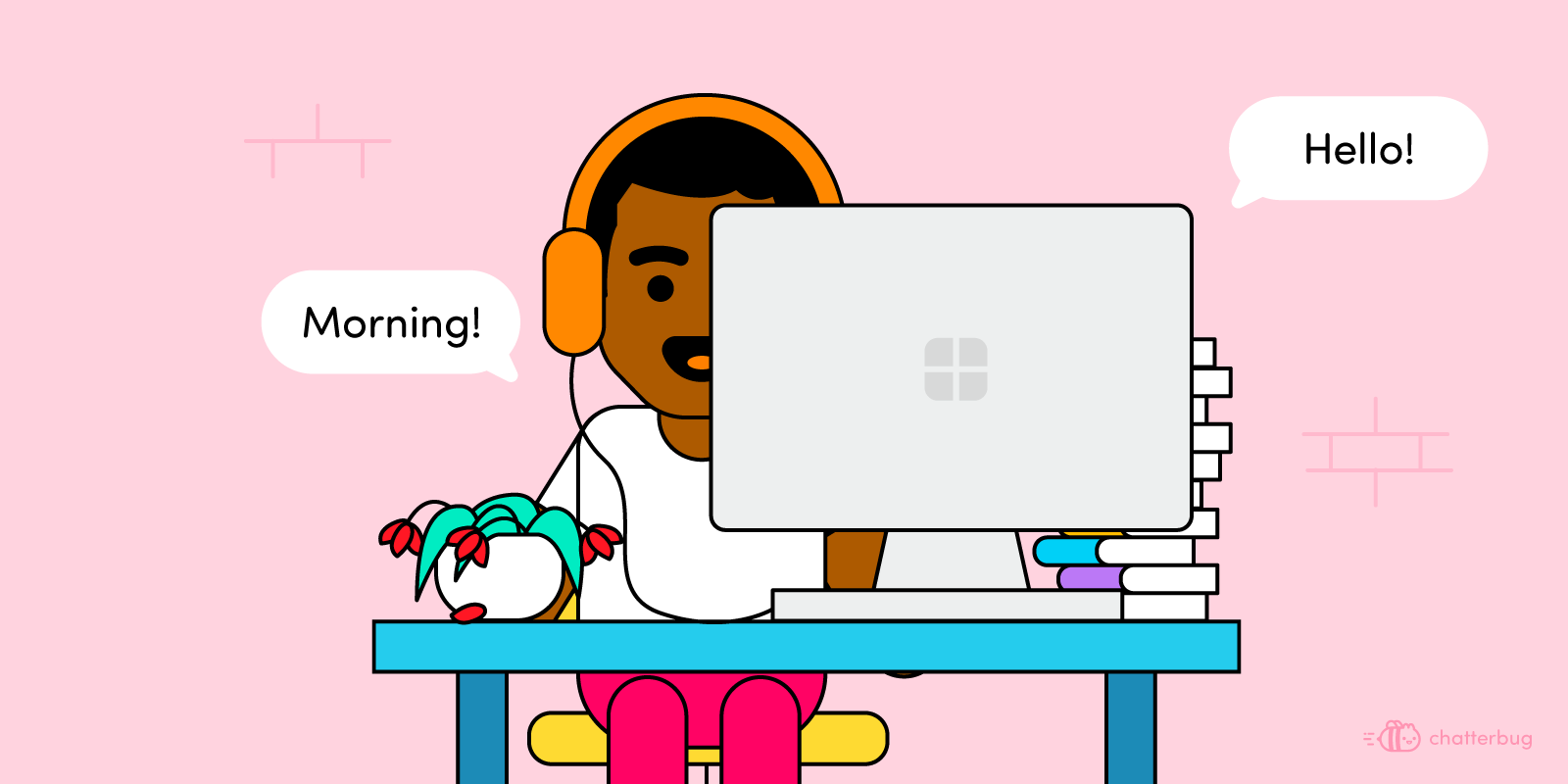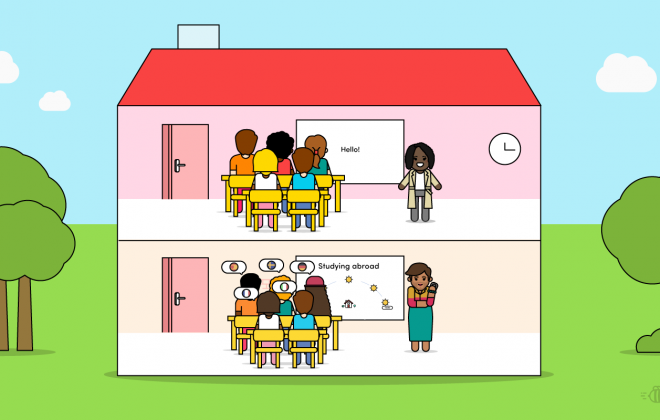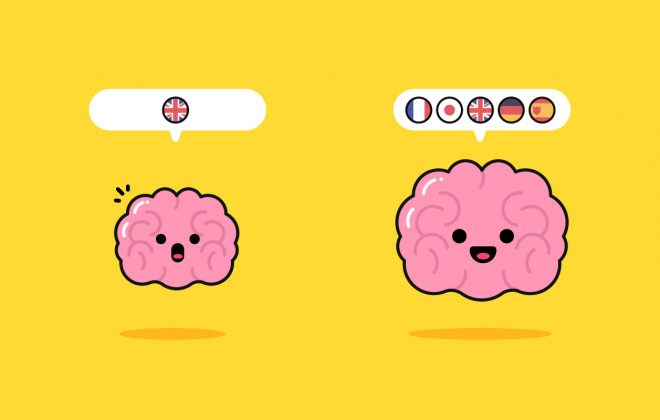7 Ways to Prepare for Your Online Language Lesson
Speaking in a new language can be scary. Meeting someone over a webcam can be scary. Combine the two? In theory, quite scary! But in practice, it doesn’t have to be. In fact, video lessons are great way to learn a language when you can’t get to a language school.
In the current climate, we are adjusting to a life indoors. This can prove challenging, even for the biggest homebody. But your language learning doesn’t have to grind to a halt just because you’re confined inside. As long as you and your tutor have access to the internet, a webcam and a microphone, you can continue your studies as you intended. Better, you can stay in your pyjama trousers!
There are a lot of benefits to learning from home. You avoid a rushed commute. You can learn at your own pace. Of course, on lazier days, you might worry that your pace will match that of a snail’s. That’s why video lessons provide a perfect compromise. You can enjoy the relaxing enviroment of your own home but still have classes to attend. Maintaining motivation can be difficult, but if you have a class scheduled, you have an effective lesson to look forward to.
A lot of companies already offer online classes. Lingoda, Chatterbug (yours truly) and Babbel all offer courses designed to be taken in the comfort of your own home, without scrimping on the benefits of a classroom setting.
If you’re thinking of moving your classes online, or if you’re at the beginning of learning a new language, we have some tips on how to prepare for your online language lesson to ensure it runs smoothly.

1. Good internet connection
Let’s start with the basics. As obvious as this sounds, the importance of good internet connection can’t be stressed enough. Think of those failed skype calls with your grandma speaking very loudly into the camera and ignoring your instruction to reset the router? The juddering screen, the broken sentences, the eventual silence. Now imagine that in another language. That’s no way to learn!
Make sure you set up somewhere with strong, consistent connection to avoid a lesson full of ‘Wha-? Sorr-? I can’t….’. It’s not worth it. (And stuttering in your target language doesn’t count as practice).
2. Test your webcam and microphone
This is another obvious point, but as important as the first. You won’t have a successful conversation if you can’t be heard. If your teacher uses props or does learning exercises that require them to be seen, it is important that both of your webcams are disaplying clear images. Even if they don’t use props, it’s easier to have a conversation in a different language if you can see them, and obviously it’s impossible to have a conversation if you can’t hear them or be heard yourself.
3. Prepare some conversation topics
Getting started is often the hardest part of a language lesson. Like with any form of exercise, you need to warm up a bit. It can be helpful to run over some sentences before you get chatting with your tutor so you’re not caught out. Weather, what you did at the weekend, what you’ve got planned for the week are all easy small-talk go-tos without having to use much imagination. Don’t overdo it though, your tutor doesn’t need to know everything you’ve done this week!

4. Prepare some questions
It’s just as important to have some content to offer as it is to ask for some back. No one likes listening to a monologue. Even a teacher who’s pleased with your progress can only muster so much interest for every detail of your grocery shop. What’s more, you benefit as much from listening as you do from talking. Familiarising yourself with how a native speaker sounds will greatly benefit your learning.
5. Get to know your teacher
Video calls don’t have to be impersonal. Not being in the presence of someone physically doesn’t mean you can’t develop a good rapport with someone. If you have the same teacher again and again, try to learn a little bit about them and their teaching style so you can work well with them.
6. Create a study space
Your screen doesn’t count as a study space, no matter how much time you spend lost in it… When you bring your studies home, create a space to which you’ll commit your study sessions. Be it at your desk, on your sofa or at your kitchen table, you want to create a space that enables you to focus. That means getting rid of distractions like your phone, books or whatever else you might try to procrastinate with. And no, I don’t think your study space can be in front of your TV…

7. Identify your learning goals
What do you want to get out of your video lessons? If your aim is to become conversationally fluent, your focus will be different to someone whose goal is to pass an exam. Once you have identified these goals, you can communicate them to your tutor and prepare for the lessons they create based on your objectives.
Overall, having a video lesson is not as different to having an in-person lesson as you might think. Just like in a school, you need to prepare for classes, you benefit from having a rapport with your teacher and you get to practice speaking and listening. Plus, you can avoid early mornings, save on travel time and can stay in your trackies without judgement. Are you convinced? Click below to give it a go for free!
(Our classes are structured around exercises created by language teachers, so there’ll be no awkward silences – we promise! ;))
Want to learn more?
If you’re feeling inspired, sign up below for a free two-week trial and a Live Lesson with a private qualified tutor to start speaking a new language for real! Our classes are structured around exercises created by language teachers, so there’ll be no awkward silences – we promise! 😉
And don’t forget to check out our Facebook, Twitter and Instagram pages for more language content!



